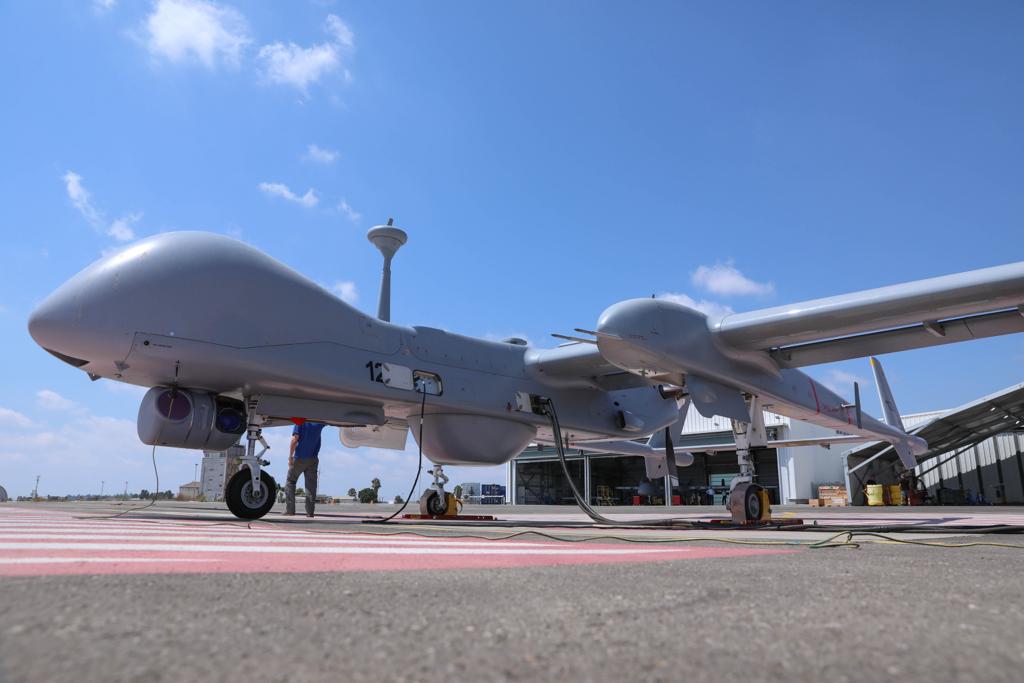
Tel Aviv: Germany has decided to expand the use of the Israeli made Heron –TP strategic UAVs. This decision is another lesson from the ongoing war in Ukraine.
In 2016, the Germans leased five Israel Aerospace Industries (IAI) Heron TP and another two for training in a deal valued at around Euro 1 billion. Later the deal has been expanded. After a long debate, the German parliament approved to equip the UAVs with dedicated weapon systems.
Initially, the deal was meant to allow the long endurance UAVs to support German forces overseas. But the war in Ukraine made Germany to reconsider its defence needs. The Germans signed a deal to acquire the Israeli made Arrow 3 air defence system, designed to intercept long range ballistic missiles. And now the Germans have decided to expand the use of the Heron TP UAVs.
Few days ago, IAI signed what is defined as a “Pivotal Agreement” to deploy cutting-edge Heron – TP UAVs as part of a comprehensive UAV deal for Germany. The agreement solidifies a landmark collaboration to enhance defence and intelligence capabilities within German territory.
Under the terms of the agreement, Germany will leverage IAI’s state-of-the-art Heron TP UAVs to support a wide range of defence and intelligence missions across both land and sea, including demonstration of new capabilities and technologies. The deployment is scheduled to commence in the upcoming year.
The agreement encompasses not only the deployment of advanced UAV technology but also includes comprehensive updates and technological enhancements to the ground array of the systems. The agreement reflects the result of extensive deliberations and cooperation on multiple fronts, highlighting their shared commitment to addressing the evolving security landscape.
The deployment of the Heron TP UAVs in Germany signifies a milestone achievement for Israel Aerospace Industries, reinforcing its position as a leading provider of cutting-edge aerospace and defence solutions on the global stage. This collaboration sets the stage for continued innovation and collaboration in addressing the ever-evolving challenges in the defence sector.
Israeli sources said that the deal will enable to equip the strategic UAVs with additional payloads and advanced systems that are designed to distribute the data collected by the UAV with many clients.
The IAI Heron TP is a multi-role, advanced, long range Medium Altitude Long Endurance (MALE) UAV for strategic missions. It is equipped with automatic taxi-takeoff and landing systems (ATOL), satellite communication (SATCOM) for extended range, fully redundant avionics and more.
The Heron TP was designed as a multi-mission platform to address local and international customers’ needs and to perform a variety of strategic missions, including intelligence gathering, surveillance, target acquisition and reconnaissance, using various payloads, with a high level of reliability. The Heron TP has a max takeoff weight of 5670 kg. It can carry a payload of up to 2700 kg. This UAV has a wingspan of 26 meters and a 30 hours endurance.
According to sources, the added capabilities for the German Heron –TP will include different versions of the IAI Mission Operation and Intelligence Centre (MOIC). Centralised command and control is essential when engaged in UAV missions, to manage the huge amounts of data collected from observation, radar, COMINT and ELINT. IAI’s state-of-the-art Mission Operation and Intelligence Centre (MOIC) is an all-in-one headquarters that meets these needs.
According to the Israeli company, MOIC’s modular layout, which includes mission operational cells, a commander cell, an exploitation centre, a C2 cell, a full trainer, a SATCOM facility, a support facility and a data storage centre, provides the ability to adjust the control centre according to your specific operational needs.
By placing all pilots, mission operators, ISR analysts and decision makers at a single, central location, the MOIC provides a common operational picture and enables integrated management of multiple UAV platforms and payloads, or UAV fleet and manned platforms. In doing so, it maximises the efficiency of mission flow and improves real-time operation and coordination of the fleet, while also improving safety and protecting ground assets.
The MOIC also conserves manpower and resources that would otherwise be required to process huge quantities of data from multiple offline and online sensors, processing it in real time, and archiving all raw and processed information for future analysis.















